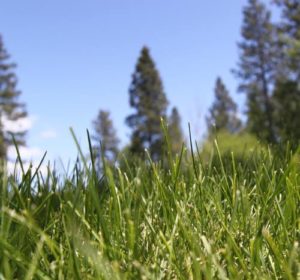Benefits Summary:
- A lawn that is mowed on a regular interval will:
- Be more dense and healthy.
- Be more drought resistant.
- A lawn that is mowed at the appropriate height will:
- Be healthy.

- Be better able to resist stresses.
You’ve spent hundreds of dollars creating beautiful landscaping around your home including a lawn. During the spring in Central Oregon, grass plants awaken from winter and begin growing. The soil has warmed making nutrients more available, you have likely fertilized, and your lawn is greening up. If you are like most people, there is little time for lawn mowing in your hectic schedule. Two of the most important things you can do to keep your lawn healthy are mowing on a regular interval and mowing at the appropriate height of cut. When making decisions about mowing interval and selecting the height adjustment on your mower, keep in mind that grass roots are negatively impacted when more than 33% or one third of the foliage is removed in any one mowing.
Appropriate mowing interval is determined by the rate at which your lawn is growing. If you have recently fertilized and the grass is growing very rapidly, you may need to adjust your mowing interval in order to avoid cutting too much foliage when you mow. A typical interval for a home lawn would be one mowing per week, but when grass is growing hard, the mowing interval may need to be shortened to one mowing every three to four days. Your lawn’s root system will appreciate the regular mowing, and will repay you by keeping the foliage supplied with water and nutrients.
Appropriate height of cut is determined by the biology of the type of grass you have in your lawn. Some grass species will not tolerate being mowed too short, while some grass species do not perform well when mowed too tall. In Central Oregon, the predominant grasses in lawn seed mixes and commercial sod are: Kentucky Bluegrass, Perennial Ryegrass and Fine Fescue. Each of these grass species performs well when cut at 1¼”-2 ½”, so adjust your mower in this range for the healthiest lawn. If you have Creeping Bentgrass or a pure stand of Annual Bluegrass, these species prefer to be maintained at a lower height of cut. In this situation, you will want to adjust your mower to ¾” or lower.
This Tip provided by:
David Roath, 7 years experience as Head Golf Course Superintendent at Sunriver Resort’s Meadows Golf Course, Turf and Landscape Management Hortculture Degree from OSU, LCB#15512.
